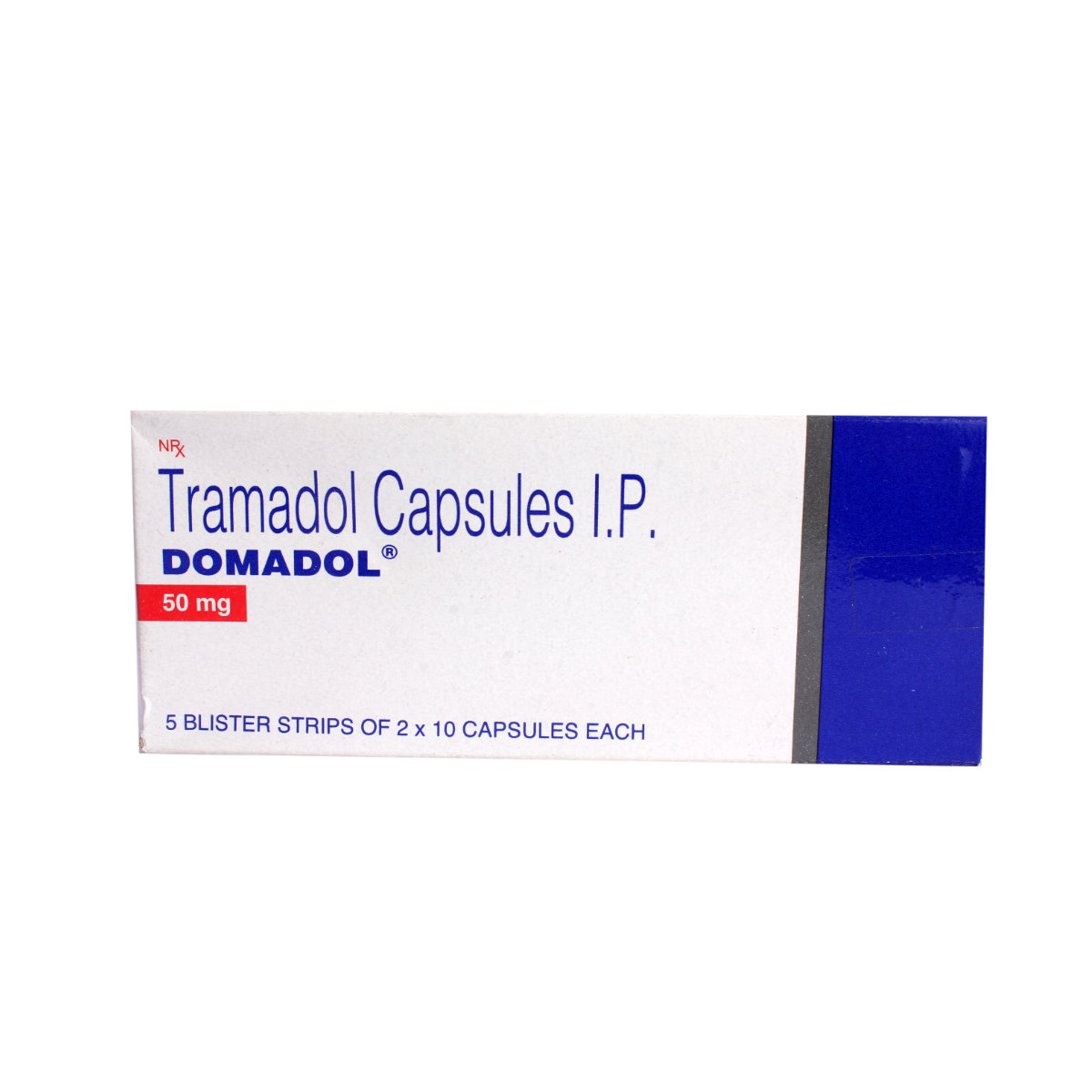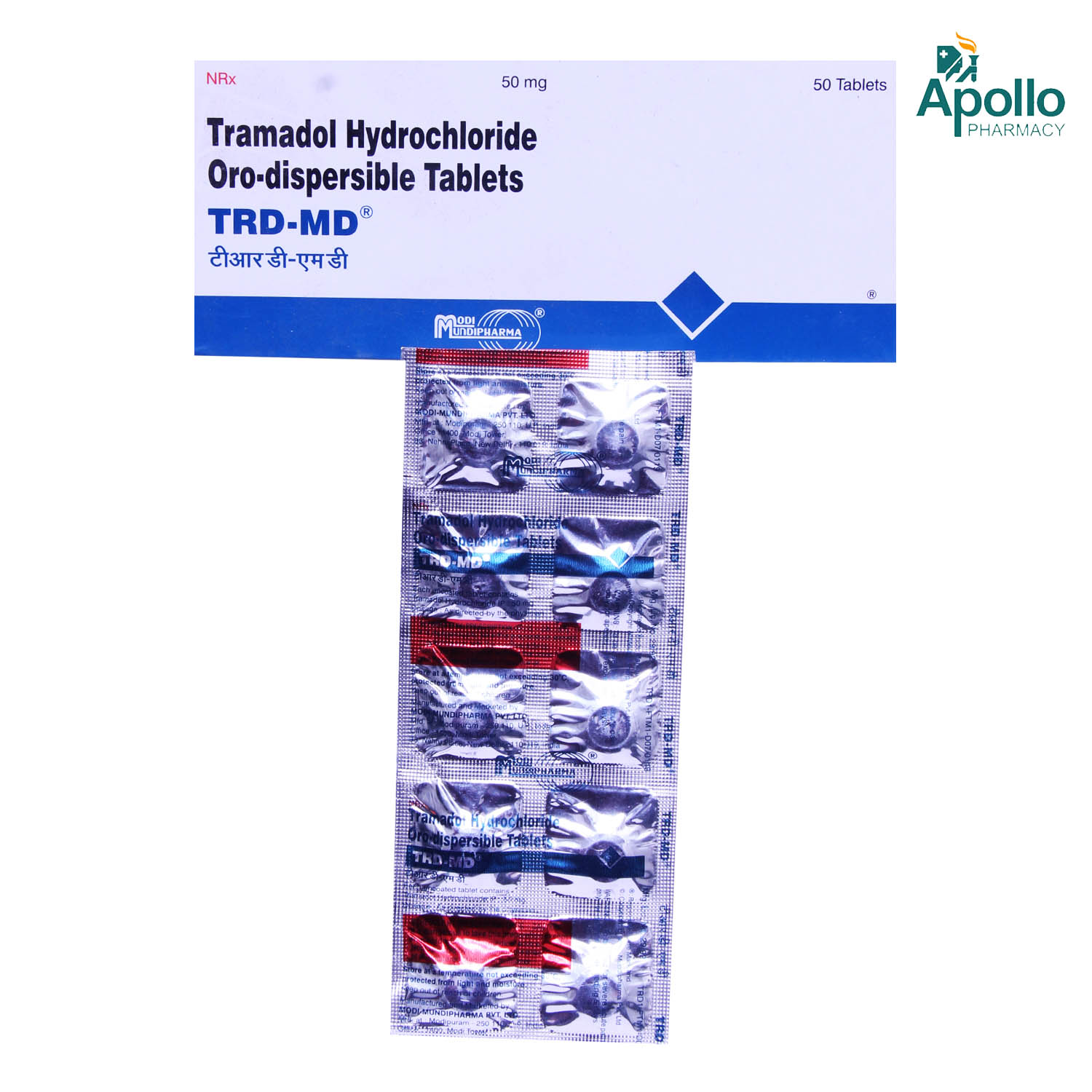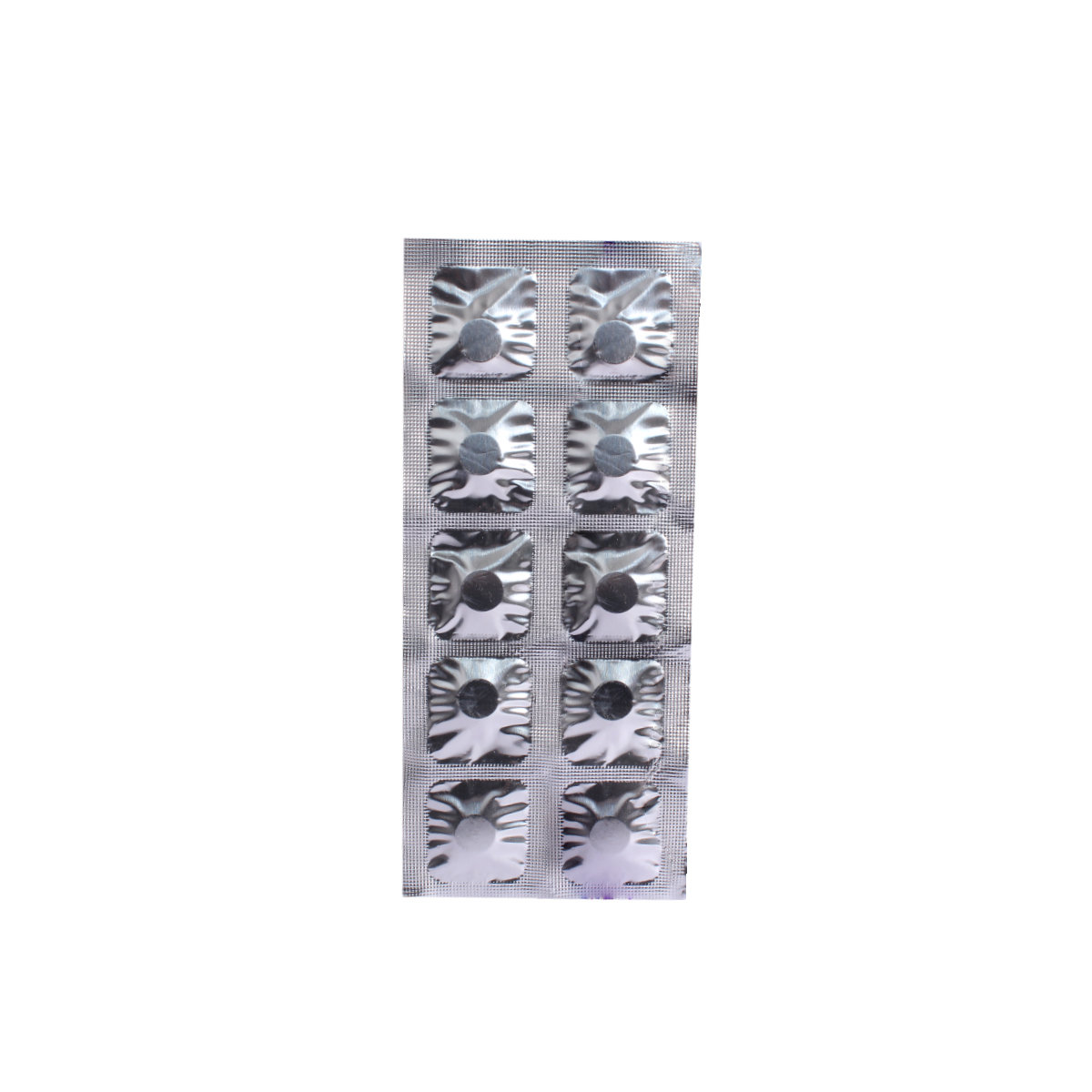Tramatas Tablet

MRP ₹51
(Inclusive of all Taxes)
₹7.7 Cashback (15%)
know your delivery time
Provide Delivery Location
Composition :
Manufacturer/Marketer :
Consume Type :
Expires on or after :
Return Policy :

Secure Payment

Trusted by 8 Crore Indians

Genuine Products
Therapeutic Class
Country of origin
Manufacturer/Marketer address
Author Details
We provide you with authentic, trustworthy and relevant information
Disclaimer
Alcohol
Safe if prescribed
Avoid consumption of alcohol with Tramatas Tablet as it may cause drowsiness or increase the risk of side effects.
Pregnancy
Consult your doctor
Tramatas Tablet is a Category C pregnancy drug and is considered unsafe for pregnant women as it may cause withdrawal symptoms in baby after birth.
Breast Feeding
Consult your doctor
Avoid breastfeeding while taking Tramatas Tablet as it may be excreted in breast milk and cause adverse effects in the baby.
Driving
Safe if prescribed
Tramatas Tablet may cause dizziness, blurred vision or drowsiness in some people. It is an offence to drive if Tramatas Tablet affects you. Therefore, avoid driving if you feel drowsy, dizzy or experience any vision problems after taking Tramatas Tablet .
Liver
Consult your doctor
Take Tramatas Tablet with caution, especially if you have a history of Liver diseases/conditions. The dose may be adjusted by your doctor as required. However, the recommended dose of Tramatas Tablet for adult patients with liver cirrhosis is 50 mg every 12 hours.
Kidney
Consult your doctor
Take Tramatas Tablet with caution, especially if you have a history of Kidney diseases/conditions. In patients with creatinine clearances of less than 30 mL/min, dosing reduction might be recommended.
Children
Safe if prescribed
Tramatas Tablet is not recommended for children below 12 years of age.
Product Substitutes
Reference
- https://www.medicines.org.uk/emc/files/pil.6116.pdf
- https://www.medicines.org.uk/emc/files/pil.4648.pdf
- https://www.medicines.org.uk/emc/files/pil.1625.pdf
- https://www.accessdata.fda.gov/drugsatfda_docs/label/2017/021692s015lbl.pdf
- https://www.drugs.com/tramadol.html
- https://www.nhs.uk/medicines/tramadol/
- https://www.medindia.net/drugs/drug-food-interactions/tramadol.htm
About Tramatas Tablet
Tramatas Tablet belongs to a class of drugs called opioid analgesics (pain killers). Tramatas Tablet is primarily used to prevent and treat moderate to severe pain. Pain is an unpleasant sensation caused by an injury or illness. Pain may be acute (short term) or chronic (long term). It can be general (overall body pains) or localized (pain in a specific area of the body).
Tramatas Tablet contains Tramadol which works by mimicking the action of endorphins (pain-reducing chemicals) in the brain and spinal cord. Thereby inhibits the transmission of pain signals from nerves to the brain. Also, Tramatas Tablet improves the effect of serotonin and noradrenaline (chemical messengers in the brain and spinal cord) and helps in relieving pain.
Take Tramatas Tablet as prescribed. Your doctor will advise you how often you take Tramatas Tablet based on your medical condition. In some cases, you may experience nausea, dizziness, headache, vomiting, dry mouth, drowsiness, constipation, sweating or tiredness. Most of these side effects of Tramatas Tablet do not require medical attention and gradually resolve over time. However, if the side effects worsen or persist, please consult your doctor.
If you are known to be allergic to Tramatas Tablet or any other medicines, please tell your doctor. Tramatas Tablet is not recommended for children below 12 years of age. If you are pregnant or breastfeeding or have a history of fits, please inform your doctor before taking Tramatas Tablet . Do not consume alcohol with Tramatas Tablet as it may increase the risk of side effects. Avoid frequent or high doses as it may lead to addiction.
Uses of Tramatas Tablet
Medicinal Benefits Mweb
Key Benefits
Tramatas Tablet is a pain killer that works by mimicking the action of endorphins (pain-reducing chemicals) in the brain, thereby, inhibiting the transmission of pain signals from nerves to the brain. Thus, Tramatas Tablet improves the effect of serotonin and noradrenaline (chemical messengers in the brain and spinal cord) and helps in relieving pain. Tramatas Tablet is used to relieve pain after surgery, pain caused by an injury or illness.
Directions for Use
Side Effects of Tramatas Tablet
- Nausea
- Dizziness
- Headache
- Vomiting
- Dry mouth
- Drowsiness
- Constipation
- Sweating
- Tiredness
Drug Warnings
Do not stop taking Tramatas Tablet suddenly as it may cause withdrawal symptoms. Avoid frequent or high doses as it may lead to addiction. If you are known to be allergic to Tramatas Tablet or any other medicines, please tell your doctor. Tramatas Tablet is not recommended for children below 12 years of age and for children suffering from breathing problems as it may worsen the symptoms of Tramatas Tablet toxicity. If you are pregnant or breastfeeding or have a history of epilepsy (fits), please inform your doctor before taking Tramatas Tablet . Do not consume alcohol with Tramatas Tablet as it may increase the risk of side effects. Tramatas Tablet should be taken with caution by the patients taking sleeping pills, tranquillizers, hypnotics or other opiate containing pain killers.
Drug-Drug Interactions
Drug-Drug Interactions
Login/Sign Up
Taking rasagiline with Tramatas Tablet can increase the risk of serotonin syndrome (A condition in which a chemical called serotonin increase in your body).
How to manage the interaction:
Taking Tramatas Tablet with Rasagiline is not recommended, as it can lead to an interaction, but can be taken if advised by your doctor. However, if you experience any symptoms like severe headache, blurred vision, confusion, seizures, chest pain, nausea or vomiting, sudden numbness or weakness (especially on one side of the body), speech difficulties, fever, sweating, lightheadedness, and fainting, contact your doctor immediately. Do not discontinue any medications without first consulting your doctor.
Combining Tranylcypromine with Tramatas Tablet can increase the risk of serotonin syndrome (a condition in which a chemical called serotonin increase in your body).
How to manage the interaction:
Taking Tranylcypromine with Tramatas Tablet is not recommended, but can be taken together if prescribed by a doctor. However, consult a doctor if you experience confusion, hallucination(seeing and hearing things that do not exist), fits, blood pressure alteration, increased heart rate, fever, excessive sweating, shivering or shaking, blurred vision, pain in the muscles or stiffness, incoordination, stomach cramps, nausea, vomiting, and diarrhea. Do not discontinue any medications without consulting your doctor.
Taking Safinamide with Tramatas Tablet can increase the risk of serotonin syndrome (A condition in which a chemical called serotonin increase in your body).
How to manage the interaction:
Taking Safinamide with Tramatas Tablet is not recommended as it can possibly result in an interaction, but can be taken together if prescribed by a doctor. However, consult a doctor if you experience confusion, hallucination(seeing and hearing things that do not exist), fits, blood pressure alteration, increased heart rate, fever, excessive sweating, shivering or shaking, blurred vision, pain in the muscles or stiffness, incoordination, stomach cramps, nausea, vomiting, and loose stools. Do not discontinue any medications without consulting your doctor.
Combining Phenelzine with Tramatas Tablet can increase the risk of serotonin syndrome and seizures.
How to manage the interaction:
Taking Tramatas Tablet with Phenelzine is not recommended, please consult your doctor before taking it.
Co-administration of Linezolid with Tramatas Tablet can increase the risk of serotonin syndrome and seizures.
How to manage the interaction:
Taking Linezolid with Tramatas Tablet is not recommended, consult a doctor before taking it. Consult a doctor if you experience confusion, hallucination, seizure, extreme changes in blood pressure, increased heart rate, fever, excessive sweating, shivering or shaking, blurred vision, muscle spasm or stiffness, tremor, incoordination, stomach cramp, nausea, vomiting, and diarrhea. Do not stop using any medications without talking to a doctor.
Co-administration of Tramatas Tablet with Alvimopan can make the side effects worse or more dangerous.
How to manage the interaction:
Taking Alvimopan with Tramatas Tablet is not recommended, please consult your doctor before taking it.
Co-administration of Ziprasidone with Tramatas Tablet can increase the risk of irregular heart rhythm.
How to manage the interaction:
Taking Tramatas Tablet with Ziprasidone together can possibly result in an interaction, but it can be taken if a doctor has advised it. However, consult a doctor immediately if you experience sudden dizziness, lightheadedness, fainting, shortness of breath, or heart palpitations. Do not discontinue any medications without consulting a doctor.
Co-administration of metoclopramide with Tramatas Tablet may increase the risk of seizures(fits).
How to manage the interaction:
Although there is a possible interaction between metoclopramide and Tramatas Tablet, you can take these medicines together if prescribed by your doctor. Do not stop using medications without a doctor's advice.
Co-administration of oxazepam with Tramatas Tablet can increase the risk of irregular heart rhythms.
How to manage the interaction:
Taking oxazepam with Tramatas Tablet together is generally avoided as it can possibly result in an interaction, but it can be taken if your doctor has advised it. However, contact a doctor immediately if you experience dizziness, lightheadedness, fainting, shortness of breath, or irregular heartbeat. Do not discontinue any medications without consulting a doctor.
Co-administration of Tramatas Tablet with mifepristone can increase the risk of irregular heart rhythms.
How to manage the interaction:
Taking Tramatas Tablet with mifepristone together can result in an interaction, it can be taken if a doctor has advised it. However, contact a doctor immediately if you experience any symptoms such as dizziness, lightheadedness, fainting, shortness of breath, or irregular heartbeat. Do not discontinue any medications without consulting a doctor.
Drug-Food Interactions
Drug-Food Interactions
Login/Sign Up
Drug-Diseases Interactions
Drug-Diseases Interactions
Login/Sign Up
Drug-Drug Interactions Checker List
- BUPRENORPHINE
- WARFARIN
- ALPRAZOLAM
- CARBAMAZEPINE
- ONDANSETRON
- KETOCONAZOLE
- CIPROFLOXACIN
- ERYTHROMYCIN
- FLUOXETINE
- DOXEPIN
- SAQUINAVIR
Habit Forming
Special Advise
- Patients with severe liver or kidney insufficiency should avoid taking Tramatas Tablet .
- If your children have any breathing problem, please inform your doctor as it may worsen the toxicity symptoms.
- Do not give Tramatas Tablet to others. Use Tramatas Tablet only when prescribed by a doctor and avoid frequent or doses as it may cause addiction.
- Tramatas Tablet may impair mental or physical abilities required for the performance of hazardous activities like driving a motor vehicle or operating heavy machinery.
Diet & Lifestyle Advise
- Do regular exercise such as swimming or walking.
- Drink plenty of water while taking Tramatas Tablet to avoid dry mouth.
- Maintain a fibre rich diet and eat plenty of fresh fruits and vegetables to avoid constipation while taking Tramatas Tablet .
- Avoid consumption of alcohol and quit smoking.
All Substitutes & Brand Comparisons
RX
Not for online saleDOMADOL TABLET
Unichem International
₹51
(₹4.59 per unit)
RX
Not for online saleTRAMAFLAM TABLET
Skymax Laboratories
₹70
(₹6.3 per unit)
37% COSTLIERRX
Out of StockNot for online saleKridol-MD 50 mg DT Tablet 10's
Kriven Health Solutions Pvt Ltd
₹84
(₹8.4 per unit)
83% COSTLIER
Buy best C.n.s Drugs products by
Intas Pharmaceuticals Ltd
Sun Pharmaceutical Industries Ltd
Torrent Pharmaceuticals Ltd
Alkem Laboratories Ltd
Abbott India Ltd
Cipla Ltd
Alteus Biogenics Pvt Ltd
Micro Labs Ltd
Lupin Ltd
Ipca Laboratories Ltd
D D Pharmaceuticals Pvt Ltd
Icon Life Sciences
Mankind Pharma Pvt Ltd
Tripada Healthcare Pvt Ltd
Arinna Lifesciences Ltd
Linux Laboratories Pvt Ltd
East West Pharma India Pvt Ltd
La Renon Healthcare Pvt Ltd
Talent India Pvt Ltd
Tas Med India Pvt Ltd
Zydus Healthcare Ltd
Cnx Health Care Pvt Ltd
Eris Life Sciences Ltd
Leeford Healthcare Ltd
Emcure Pharmaceuticals Ltd
Macleods Pharmaceuticals Ltd
Sigmund Promedica
Aristo Pharmaceuticals Pvt Ltd
Dr Reddy's Laboratories Ltd
Troikaa Pharmaceuticals Ltd
Consern Pharma Ltd
Zydus Cadila
Shine Pharmaceuticals Ltd
Wockhardt Ltd
Ardent Life Sciences Pvt Ltd
Crescent Formulations Pvt Ltd
Theo Pharma Pvt Ltd
Reliance Formulation Pvt Ltd
Ikon Pharmaceuticals Pvt Ltd
Propel Healthcare
Neon Laboratories Ltd
Jagsam Pharma
Msn Laboratories Pvt Ltd
Morepen Laboratories Ltd
Pulse Pharmaceuticals
Sanofi India Ltd
Med Manor Organics Pvt Ltd
Hetero Healthcare Pvt Ltd
Novartis India Ltd
Crescent Therapeutics Ltd
Elder Pharmaceuticals Ltd
Solvate Laboratories Pvt Ltd
Akumentis Healthcare Ltd
Mova Pharmaceutical Pvt Ltd
Psyco Remedies Ltd
Tripada Lifecare Pvt Ltd
Ajanta Pharma Ltd
Cyrus Remedies Pvt Ltd
Medishri Healthcare Pvt Ltd
Cadila Healthcare Ltd
Glenmark Pharmaceuticals Ltd
Matteo Health Care Pvt Ltd
Hbc Life Sciences Pvt Ltd
Lyf Healthcare
Matias Healthcare Pvt Ltd
Mesmer Pharmaceuticals
Alembic Pharmaceuticals Ltd
Capital Pharma
Crescent Pharmaceuticals
Medopharm Pvt Ltd
Alniche Life Sciences Pvt Ltd
Kivi Labs Ltd
Talin Remedies Pvt Ltd
USV Pvt Ltd
Quince Lifesciences Pvt Ltd
Solis Pharmaceuticals
Infivis Life Care
Zuventus Healthcare Ltd
Cadila Pharmaceuticals Ltd
Pfizer Ltd
Wallace Pharmaceuticals Pvt Ltd
A N Pharmacia Laboratories Pvt Ltd
Blue Cross Laboratories Pvt Ltd
Jenburkt Pharmaceuticals Ltd
Lia Life Sciences Pvt Ltd
Mano Pharma
Medley Pharmaceuticals Ltd
Primus Remedies Pvt Ltd
FDC Ltd
Maneesh Pharmaceuticals Ltd
Apex Laboratories Pvt Ltd
Gagnant Healthcare Pvt Ltd
Ozone Pharmaceuticals Ltd
RPG Life Sciences Ltd
Strides Shasun Ltd
Unichem International
GlaxoSmithKline Pharmaceuticals Ltd
Kuresys Labs Pvt Ltd
LA Pharma
Trion Pharma India Llp







